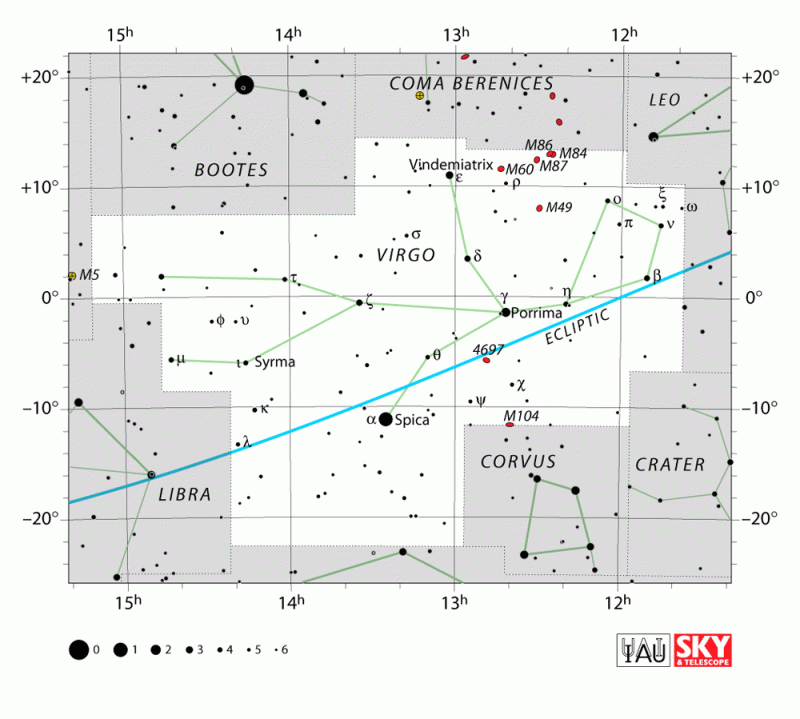At nightfall – April, 25, 2021 – look eastward to view the bright waxing gibbous moon and the star Spica over the horizon. First look for the moon, and that nearby bright star will be Spica, the brightest star in the constellation Virgo the Maiden.
Spica serves as a prime example of a 1st-magnitude star; in other words, it’s one of the brightest stars in our sky. You should have no trouble picking it out, even in the glare of the waning gibbous moon.
Spica is a blue-white gem of a star, and, for stars, color indicates the star’s surface temperature. Spica’s blue-white complexion reveals that its surface temperature is extremely high (39,860 degrees Fahrenheit, or 22,127 degrees Celsius). In contrast, our yellow-colored sun has a much cooler surface (only 9,980 degrees F, or 5,527 degrees C). The surface temperature of an orange star, such as Antares, is even cooler (7,300 degrees F, or 4,038 degrees C).

Spica lies nearly on the ecliptic, the annual pathway of the sun in front of the background stars. If you could see stars during the day, you’d see the sun in front of Virgo from approximately September 16 to October 31 each year.
The moon (more or less) follows the ecliptic as well, and thus – as the moon makes its monthly rounds in front of the constellations of the zodiac – it spends several days each month in front of Virgo, routinely passing near Spica.

But the moon’s motion along the ecliptic is somewhat wayward. The moon undergoes an 18.6-year cycle, whereby the moon – as it passes Spica – can swing anywhere from 5 degrees (10 moon-diameters) to the north of the ecliptic to 5 degrees (10 moon-diameters) south of the ecliptic.
Since Spica lies 2 degrees (4 moon-diameters) south of the ecliptic, that means the moon has periods when it occults (passes in front of) this star. The next occultation series of Spica will start on June 16, 2024, and will conclude on November 17, 2025, featuring a total of 20 occultations.
Although yellow-orange Arcturus appears brighter than blue-white Spica to our eye, that’s only because Spica is so much farther away from us. Arcturus resides about 37 light-years away, whereas Spica lies some seven times farther off than that, at about 260 light-years distant. If Arcturus stood at the sun’s distance from us, it’d shine over 100 times more brightly than the sun. But Spica at the sun’s distance away would shine with the firepower of over 2,000 suns!
Bottom line: From around the world on the night of April 25, 2021, use the waxing gibbous moon to locate Spica, the brightest star in the constellation Virgo the Maiden.











